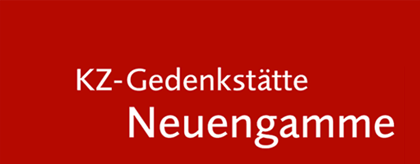Fallersleben-Laagberg (Men)
From 1941, Volkswagen used concentration camp prisoners alongside several thousand non-German forced labourers and prisoners of war for armaments production. Unlike the officially independent Arbeitsdorf concentration camp which was established in 1942, the two camps set up in Fallersleben in 1944 for male and female prisoners were satellite camps of Neuengamme concentration camp. On 31 May 1944, 800 male prisoners from Neuengamme main camp arrived at Laagberg, around three kilometres from the Volkswagen plant. 350 of these prisoners were from France, 150 from the Netherlands, 150 from the Soviet Union and Poland, and 100 from Spain. Around 18 German prisoner-functionaries were responsible for prisoner administration tasks. The prisoners were divided into nine work crews. Eight of these crews worked for Deutsche Bau AG and were supposed to erect huts for a new camp on behalf of Volkswage. The ninth crew, which consisted exclusively of Soviet prisoners, had to work in the Volkswagen forges.
According to a report by the SS Garrison Physician at Neuengamme concentration camp, Dr. Trzebinski, 656 male prisoners were still being used as labourers at Volkswagen on 25 March 1945. The remaining 144 prisoners had either died or been sent back to Neuengamme main camp because of exhaustion. In early April, additional prisoners were brought to Fallersleben from the evacuated camp in Porta Westfalica. On 8 April, all of the prisoners were taken by train to the Wöbbelin "reception camp" near Ludwigslust.
The commander of the satellite camp was SS-Hauptscharführer Johannes Pump. His deputy, who was also responsible for the work commandos, was SS-Unterscharführer Anton Callesen from Denmark. Pump was replaced in January 1945 by Wehrmacht officer Karl Werringloer, which brought about a temporary improvement in conditions at the camp.
Period
31 May 1944 to 8 April 1945
Number of Prisoners
800 Male Prisoners
Kind of Work
Construction work
Labor on Behalf of
Volkswagenwerk, Deutsche Bau AG
Location
Directions
Memorial to the Victims of National-Socialist Tyranny: Wolfsburg, Werderstraße/Ecke Schulenburgallee, 38448 Wolfsburg, Germany (from the central bus station on Porschestraße, take bus 1 to the "Waldfriedhof" stop).
Monument to the Laagberg satellite camp of Neuengamme concentration camp: Wolfsburg, Breslauer Straße/Schlesierweg (from the central bus station on Porschestraße, take bus 1 to the "Samlandweg" stop).
Documentation on the Victims of National-Socialist Tyranny: Stadtmuseum im M2K, Schlossremise, Schlossstraße 8, 38448 Wolfsburg, Germany (from the central bus station on Porschestraße, take bus 1 to the "Schloss" stop).
Opening hours: Tue.–Fri. 10:00 AM-5:00 PM, Sat. 1:00 PM-6:00 PM, Sun. 11:00 AM-6:00 PM
Memorial to Forced Labour: VW "Autostadt" on the Mittellandkanal (extensively signposted).
Opening hours: Upon arrangement at history@volkswagen.de
Memorial
Between 1983 and 1986, various initiatives in Wolfsburg instituted a process of historical elucidation. In 1985 and 1986, the "foreigners' cemetery", which holds the graves not only of slave labourers whom the Nazis had classified as "racially inferior" but also of concentration camp prisoners, was renamed the "Memorial to the Victims of National-Socialist Tyranny". A new commemorative plaque was also installed which recalls the fate of the concentration camp prisoners.
At the urging of the "Amicale Internationale de Neuengamme", a memorial stone was unveiled on 8 May 1987 in Laagberg to mark the site of the former satellite camp.
An exhibition entitled "Documentation on the Victims of National-Socialist Tyranny" opened in the Stadtmuseum Schloss Wolfsburg in 1990 and was extensively reworked in 2000. One section of the exhibition on the second floor is dedicated to the history of prisoner labour at Volkswagen. This part of the exhibition focuses on labour in 1942 at the Arbeitsdorf concentration camp, which held some prisoners from Neuengamme concentration camp. It also addresses everyday life in the men's and women's satellite camps at Fallersleben in 1944/45.
When the history of forced labour at Volkswagen became a topic of discussion in Wolfsburg in the mid-1980s, Volkswagen AG began to confront its own history by commissioning a research paper on slave labourers at VW and providing funds for humanitarian projects and reparations, among other things. In December 1999, Volkswagen AG set up a "Memorial to Forced Labour" in a former bunker on its factory grounds. One of the six sections of this memorial deals extensively with the situation of the concentration camp prisoners used as labourers at Volkswagen.
Opening hours:
Memorial to Forced Labour: The exhibition can be visited after registering at the VW company archive.
Contact
Stadtmuseum im M2K
Remisen
Schlossstraße 8
38448 Wolfsburg
Tel.: 05361 – 28 1040
Email: stadtmuseum@stadt.wolfsburg.de
Volkswagen Kommunikation
38436 Wolfsburg
Tel.: 05361 – 9 77 173
Email: history@volkswagen.de


